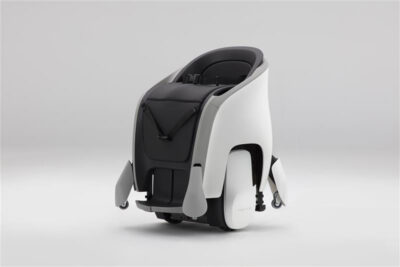
Honda Motor Co., Ltd. announced that it will introduce the UNI-ONE, a hands-free personal mobility device, to the market on September 24, 2025. Initial sales will be targeted at corporate customers in Japan.
Designed as a “mobility device to be used at destinations,” UNI-ONE is envisioned for use in facilities, offices, and workplaces to help people move efficiently within designated areas. Honda highlights potential applications such as assisting seniors, supporting diverse individuals, and enhancing workplace productivity.
By reducing strain on the legs and lower back, UNI-ONE aims to make outings more accessible for people who often avoid physical activity due to mobility concerns. With this launch, Honda seeks to further its vision of providing the “joy and freedom of mobility” to a wider audience.
By leveraging technologies amassed through its research on robotics, including ASIMO, a humanoid robot, Honda created UNI-ONE as a personal mobility device the user can steer simply by shifting body weight while sitting and keeping both hands free to move naturally in all directions as if they were walking. UNI-ONE was designed to be easy to use for people of all ages, from young children to the elderly, without requiring complex operation.
Honda has continued to develop personal mobility devices designed to work in harmony with people, such as U3-X (introduced in 2009) and UNI-CUB (introduced in 2012). As a successor model featuring further advanced technologies, UNI-ONE was introduced for the first time at the International Robot Exhibition 2022 (iREX 2022) and has since been well received by visitors of various exhibitions and test-ride events.
Since 2023, Honda has been working with some customers to conduct pre-launch paid trials of the UNI-ONE while making progress in initiatives toward mass production and commercialization. Since it obtained type certification as a “small mobility vehicle,*1” which can be used legally on public roads*2, the UNI-ONE has further expanded its scope of applications.
*1 A vehicle is identified as a “small mobility vehicle” and considered equivalent to a pedestrian when it fulfills the following requirements:
1) Vehicle dimensions must be below the following measurements:
a) Length: 120cm
b) Width: 70cm
c) Height: 120cm
2) Vehicle structure must fulfill the following conditions:
a) Use an electric motor as the prime mover.
b) Maximum speed must not exceed 6km/h.
3) The vehicle must not have any sharp protrusions that could pose a risk of causing harm to pedestrians.
*2 Certification of the previous version and the all-new version of UNI-ONE was obtained on January 30 and July 10, 2025, respectively.
Intended use cases for UNI-ONE
Honda is striving to support people to make their daily lives more enjoyable and comfortable by offering UNI-ONE to be used for various purposes: including reducing the physical burden on users while moving them around designated areas within certain facilities; or reducing the workload of people while they are in an office or other workplaces.
Moving around inside a facility:
Even if there are comfortable means of transportation to the destination, having to walk a long distance/time at the destination can be a burden, causing some people to give up their opportunity for an outing. UNI-ONE can address such issues and encourage more people to enjoy their outings.
Reducing workload at a workplace:
Leveraging its unique feature — to enable users to move around as if they are walking while keeping both hands free — UNI-ONE can contribute to productivity improvement and/or a reduction of the workload for people working in the field of office/administration. In addition, the utilization of UNI-ONE can support a diverse workforce, including those who may have difficulty walking, to play active roles in their workplaces.
Examples of facilities suitable for the intended use of UNI-ONE
1) Theme parks, tourist destinations, parks
2) Airports, commercial facilities, museums
3) Offices, medical facilities
4) Smart cities, station areas
5) Outlet malls, shopping malls
6) Exhibition halls, warehouses
UNI-ONE sales strategy
Honda will begin sales of the UNI-ONE to corporate customers in Japan in the form of a “service contract” that packages the UNI-ONE body, swappable battery, maintenance and insurance services. All sales will be conducted through the official UNI-ONE website.




COMMENTS